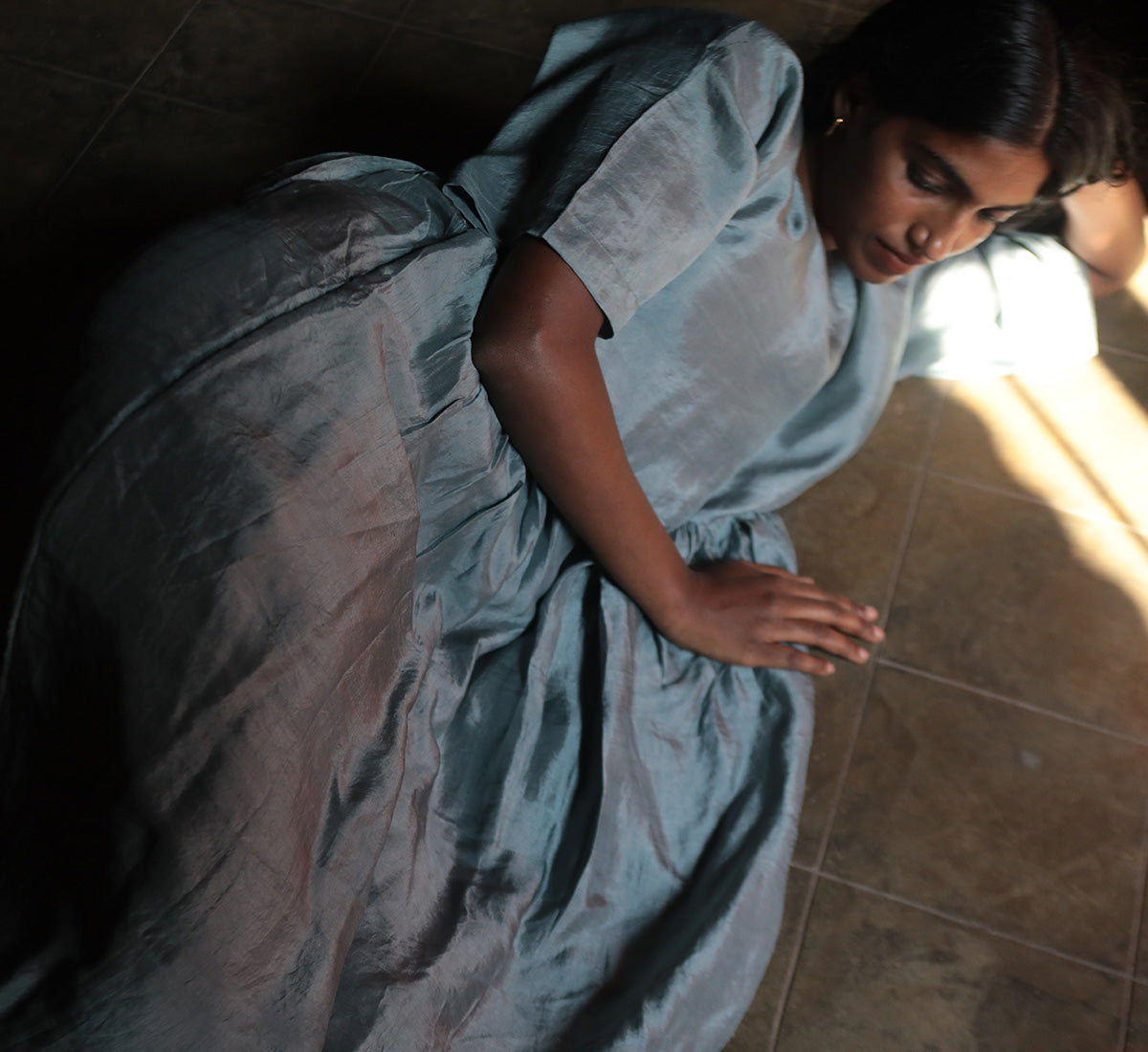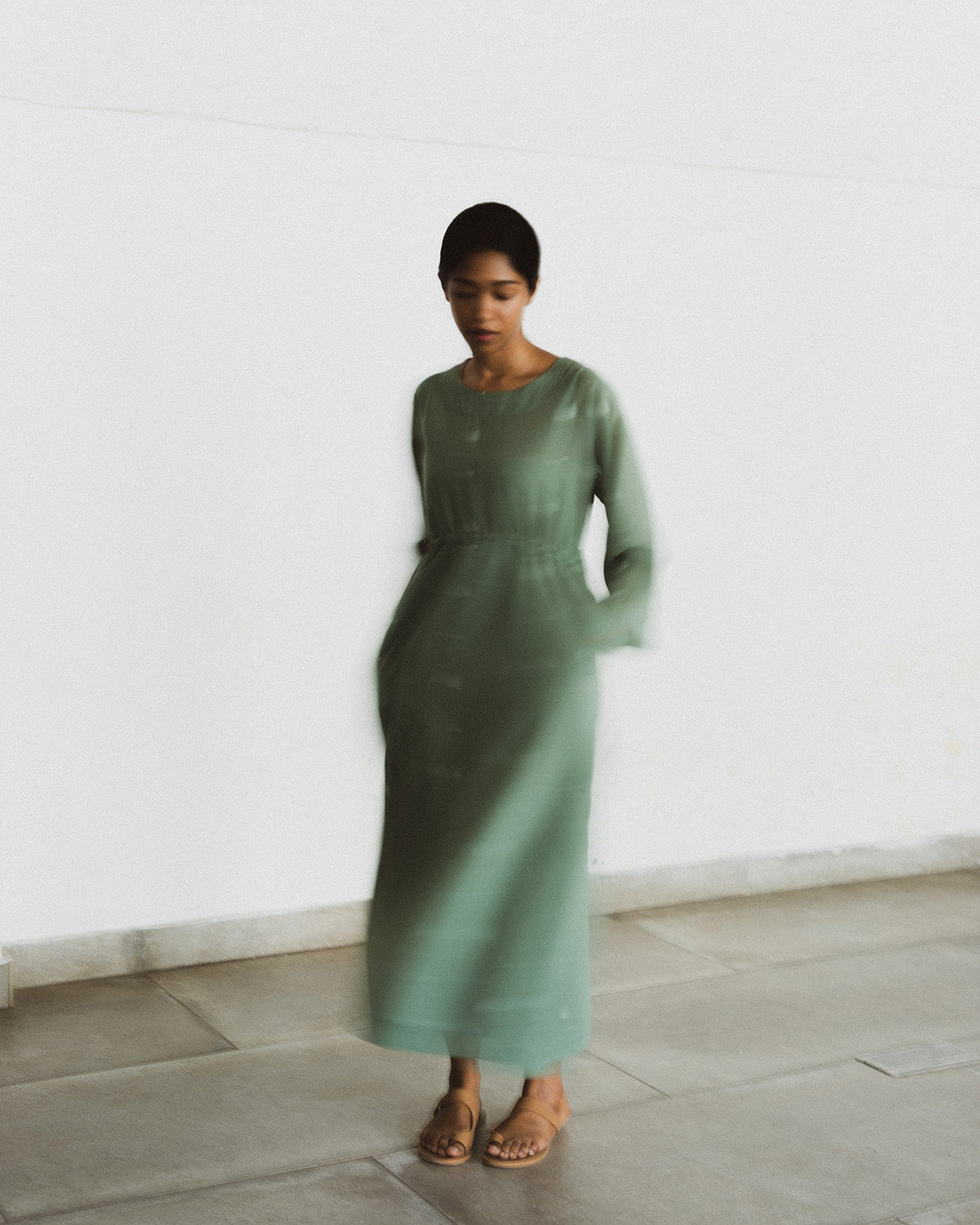
Textiles woven on handloom have been a revelation to us, and continue to be so, every day! The techniques employed by different weavers, the meticulous attention to detail required thereof, and the interplay of geometry and symmetry, make the process unique, that which unravels new possibilities very often.
When you wear a piece of handwoven clothing, you embrace its irregularities that are very typical of handloom. They may not be perfect, but these imperfections are what make that piece of clothing unique. They provide testimony to the fabric being made by hand and celebrate the skills of our artisans.
At the core of handloom and handwoven, is the idea of slowness. It is a time-consuming process, which demands patience. A process equally dependent on nature as it is on human hands. In the past few years, we have explored and worked with several textiles, but are drawn back to some naturally…
Handwoven cotton
In Bengal, we find ideals of simplicity, in its way of life, its textiles. We find Jamdani, the textile that denotes a lightness of being, where the fluidity of florals meets with the strictness of geometry.
Our big shirts in handwoven khadi cotton from Bengal are brand staples, something we got associated with quite unintendedly. Delicate textile, with Jamdani butis (motifs)-- sometimes simple, sometimes intricate– holding a common thread of them being “cloud-like”, as described by almost all their wearers!
We are inspired to introduce new motifs, away from traditional Jamdani work, with a slightly modern feel to the historically-rich textile. We develop some motifs in-house, inspired by neem trees, the moon, or the earthy tiles of Athangudi in Tamil Nadu.

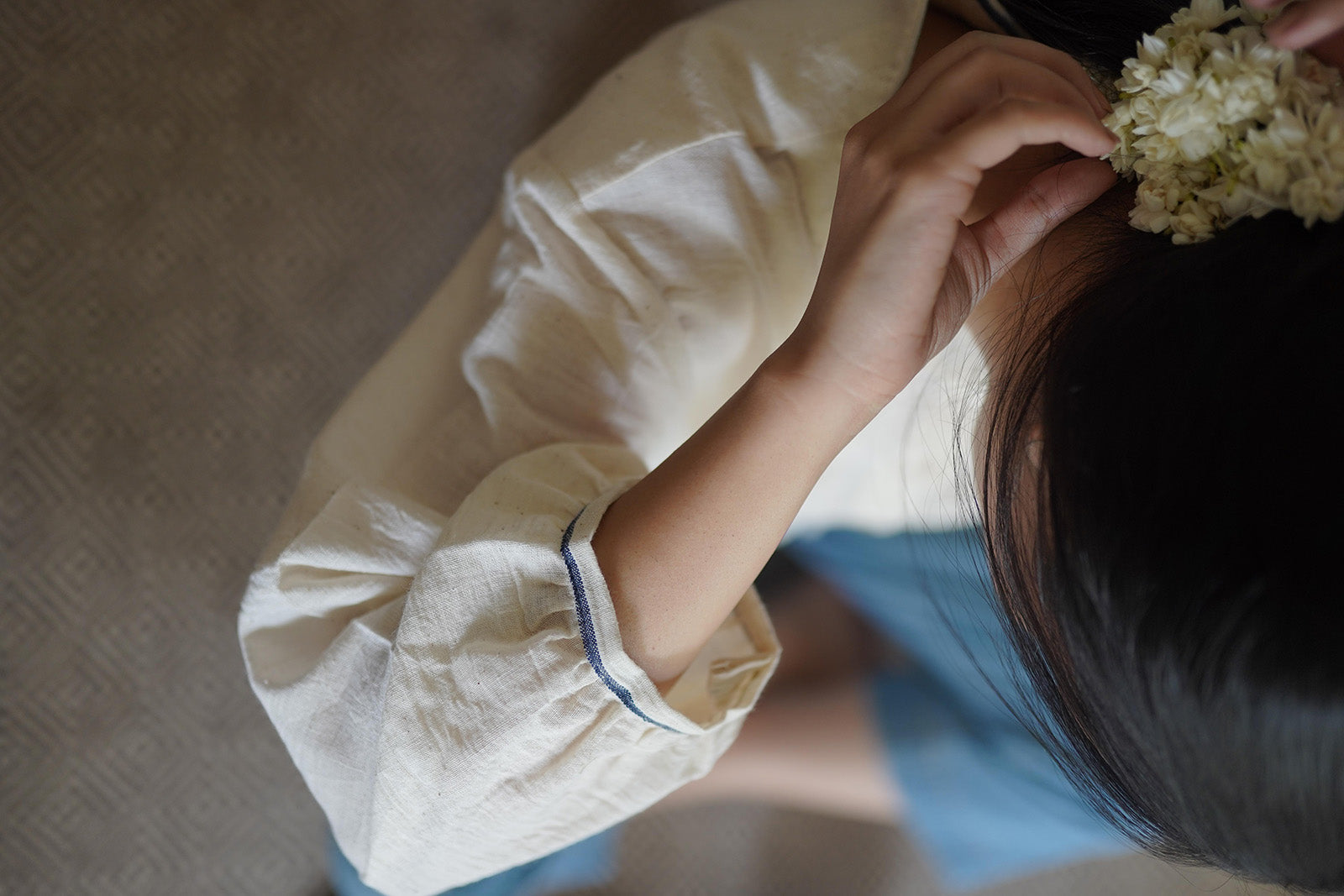
Kala Cotton
The aridity of the Kutch region in Gujarat has translated into this organic cotton that is rain-fed, and grows without the use of chemicals and pesticides. The textile is resilient, and bears a coarse texture, that only enhances the feel of the garment. We source our kala cotton from weavers across Bhuj and Kutch and also develop iterations using the Bhujodi weaving technique.
One of our most-loved designs– Half Moons in red neatly arranged on organic kala cotton, came around after a random encounter with a weaver from Bhuj. A few iterations later, just like the waxing phase of the moon, we developed a perfect half moon motif in the Bhujodi weave, and the design stays with us years after being introduced. The textile has grown on us, much after its resilience, and its rise and fall and then the rise again!
Linen
Linens have always been cool, and part of any decent wardrobe. What’s cooler? Handwoven linen. We source handwoven linen from weaver clusters in Burdhwan district in West Bengal, trying to replace mill-made linen in everyday wardrobes.
The textile can be a familiar start when you are trying to transition to a more conscious wardrobe. There is a sense of comfort in this newness, since linen has been a part of common clothing parlance for ever now. Afterall, it always feels better to live in a new home but seeing familiar things around, isn’t it?
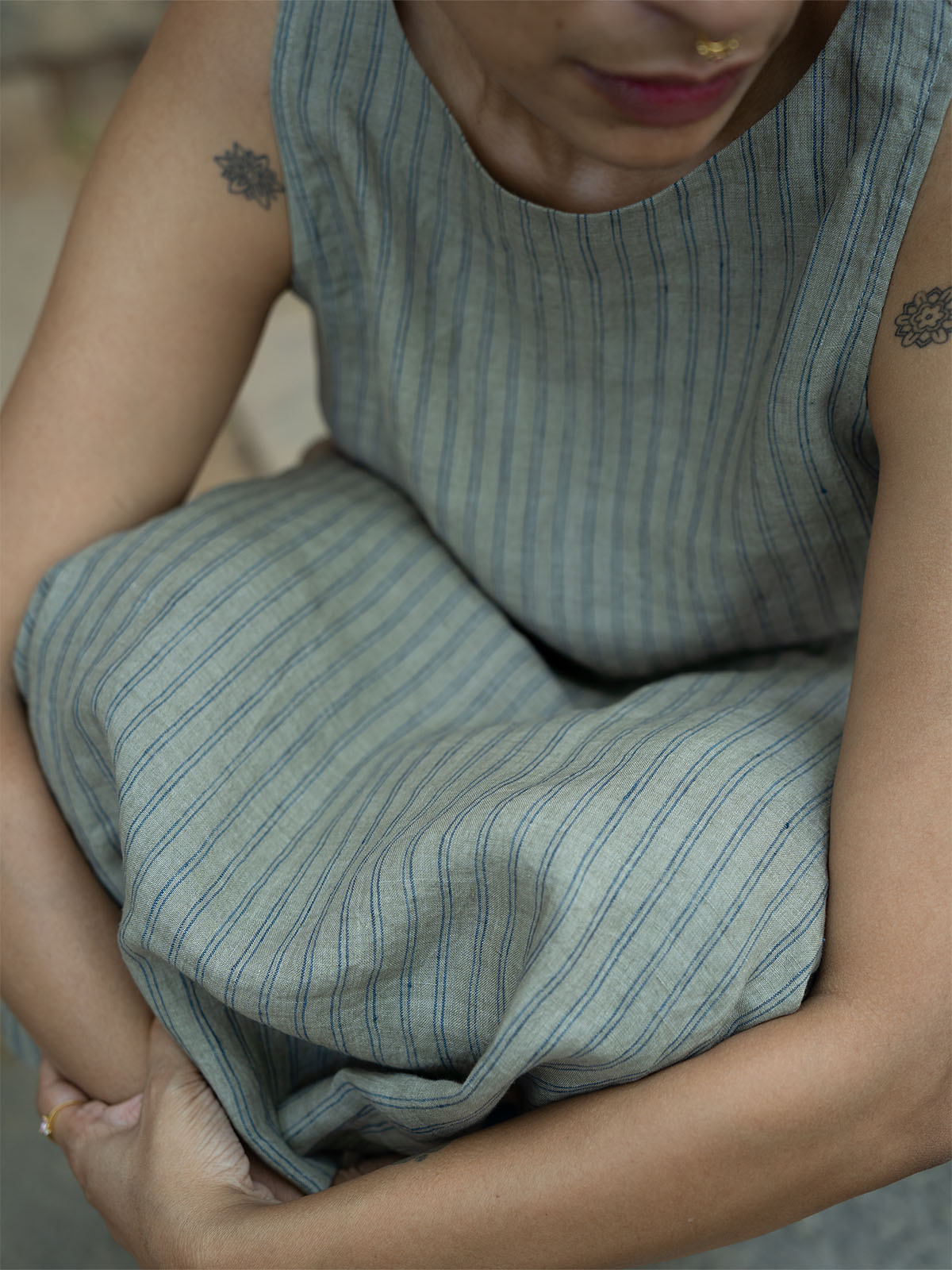
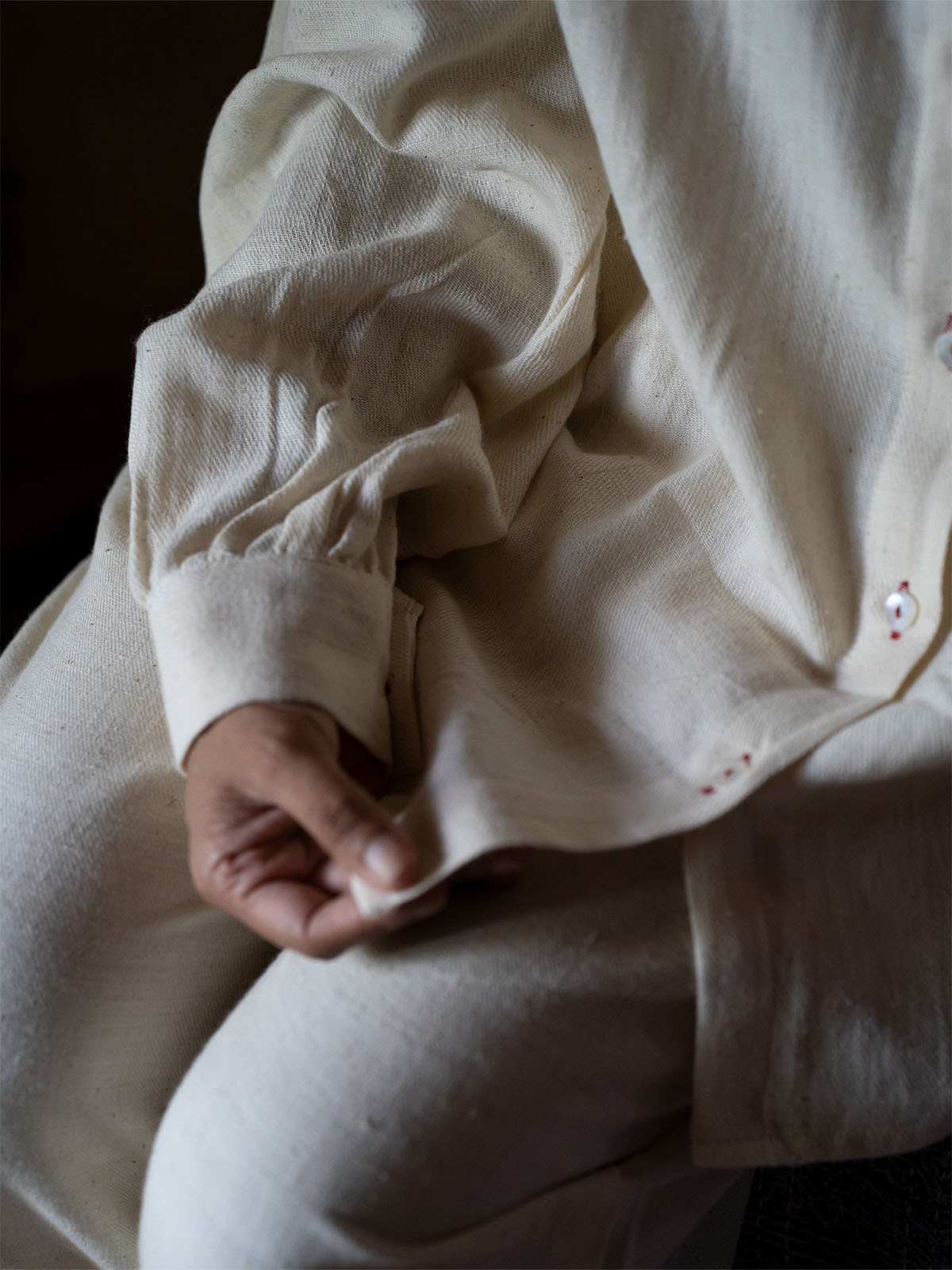
Khadi
We source khadi from certified weaver clusters and organizations from different parts of the country including Andhra Pradesh, Telangana, Karnataka and West Bengal. The form of khadi varies between different clusters and regions, besides the thickness of the fabric. However, the comfort and the feel of khadi are like no other, irrespective of the region it comes from.
A common thread of the textile is its texture, which takes the centre stage everytime we work with Khadi. The natural colour of undyed, unbleached Khadi in itself lends character to the silhouette, which explains why the humble fabric is revered like it is!
Mulberry Silk
Sourced from West Bengal, mulberry silks just like Jamdani, have become a core part of our work. Our approach to silk, just like our overall design approach, was to make it for everyday. The textile is flowy, light-weight, wearable through seasons, and brings all the elegance to your wardrobe. This has also eased the inhibition around silks, and the idea that the textile is generally heavy and needs to be worn occasionally. The idea of making silks contemporary, a part of your everyday wardrobe, has come to fruition with this particular textile.
This also happens to be one of our favourite textiles to play around with in terms of colours. Our mulberry silks are dyed after the fabric is handwoven and nothing like experimenting with a bunch of colours and discovering some that simply just shine in this textile!
